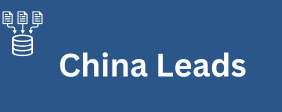Should I use JPEG or PNG for product photos is a common question among e-commerce sellers and digital marketers aiming to showcase their products effectively. Choosing the right image format is crucial because it affects image quality, loading speed, and overall user experience, all of which play a key role in converting visitors into customers. Understanding the strengths and weaknesses of JPEG and PNG formats helps make an informed decision.
Should I use JPEG or PNG for product photos depends largely on the kind of image quality you want to maintain. JPEG uses lossy compression, which reduces file size by slightly sacrificing image quality. This works well for photographs with complex colors and gradients, such as most product photos. PNG, on the other hand, uses lossless compression, preserving all image details but often resulting in larger file sizes. For product photos, where color fidelity and clarity are important but file size matters too, JPEG is often preferred.
File Size and Website Speed
Should I use JPEG or PNG for product photos also involves considering file size and website speed. Smaller image files load faster, enhancing the user experience and boosting SEO rankings. JPEG images typically have much logo designs service smaller file sizes than PNGs, making them ideal for product photos that need to load quickly on e-commerce sites. PNG images, due to their larger size, can slow down page load times if used excessively.
Transparency Needs
Should I use JPEG or PNG for product photos depends on whether transparency is needed. PNG supports transparent backgrounds, which can be essential for product images that require a clean, non-distracting look or to be creating collages with phone editing apps layered over different backgrounds. JPEG does not support transparency, so if your product photos need to have transparent areas, PNG is the better choice.
Color and Detail Accuracy
Should I use JPEG or PNG for product photos when it comes to color accuracy and detail? PNG images tend to preserve sharper edges and finer details because they are lossless. However, modern JPEG compression algorithms japan number list can retain high color fidelity and detail at reasonable file sizes. For most product photos, JPEG provides a good balance between quality and efficiency, but for images needing crisp text or graphics, PNG may be better.
Usage Context and Platform
Should I use JPEG or PNG for product photos depending on the context and platform where they will be displayed? For product listings on websites and marketplaces, JPEG is usually recommended due to its optimized balance of quality and size. For marketing materials, banners, or images that require transparency or overlays, PNG might be the preferred format. Knowing the platform’s requirements and limitations is key.
Editing Flexibility
Should I use JPEG or PNG for product photos with regard to editing flexibility? PNG files handle multiple edits better because they do not degrade quality after each save, thanks to lossless compression. JPEG images can lose quality each time they are saved due to repeated compression. Therefore, PNG is ideal during the editing process, but final images for web use are often saved as JPEG for optimal performance.
SEO and User Experience
Should I use JPEG or PNG for product photos to improve SEO and user experience? Fast-loading pages with visually appealing images improve site rankings and reduce bounce rates. JPEG’s smaller file size often enhances these factors, while PNG’s larger files can slow down the site if not optimized. Properly compressed JPEGs can maintain high quality while keeping load times low.
Best Practices for Choosing Formats
Should I use JPEG or PNG for product photos can be answered by combining both formats strategically. Use PNG for images requiring transparency or high detail, such as logos or graphics, and JPEG for most product photos to balance quality and performance. Additionally, using modern image formats like WebP might offer even better compression and quality but may not be supported everywhere.
